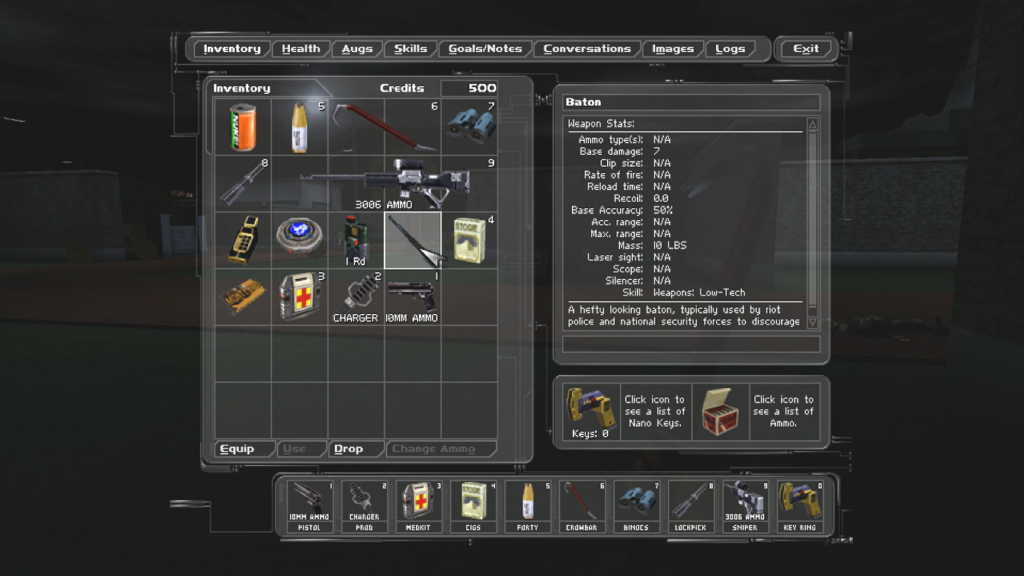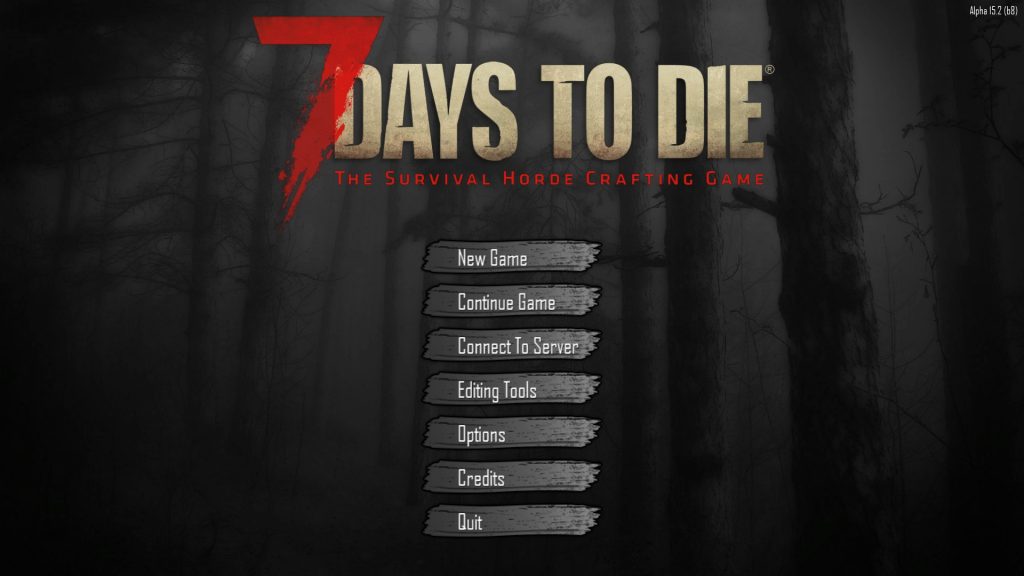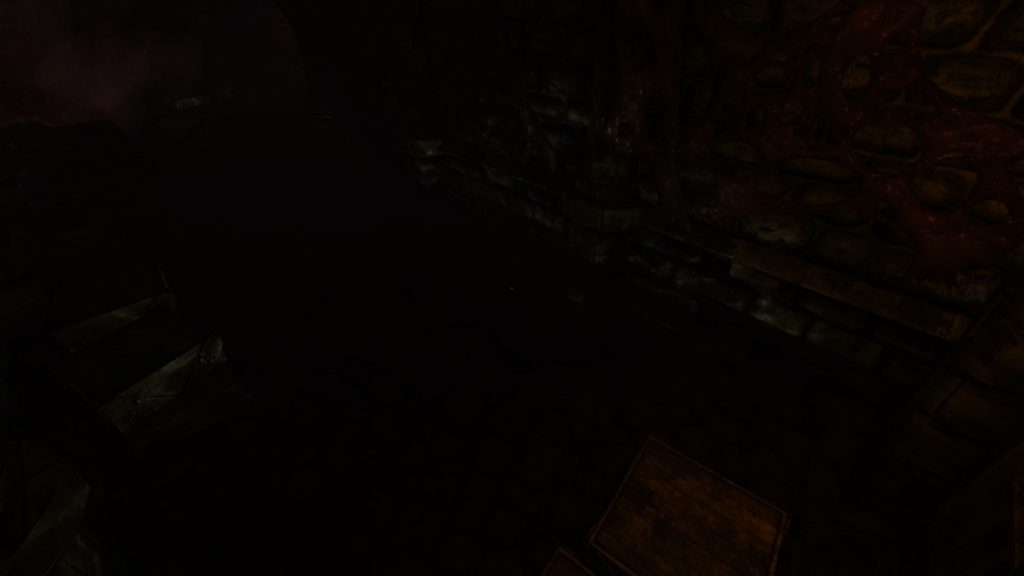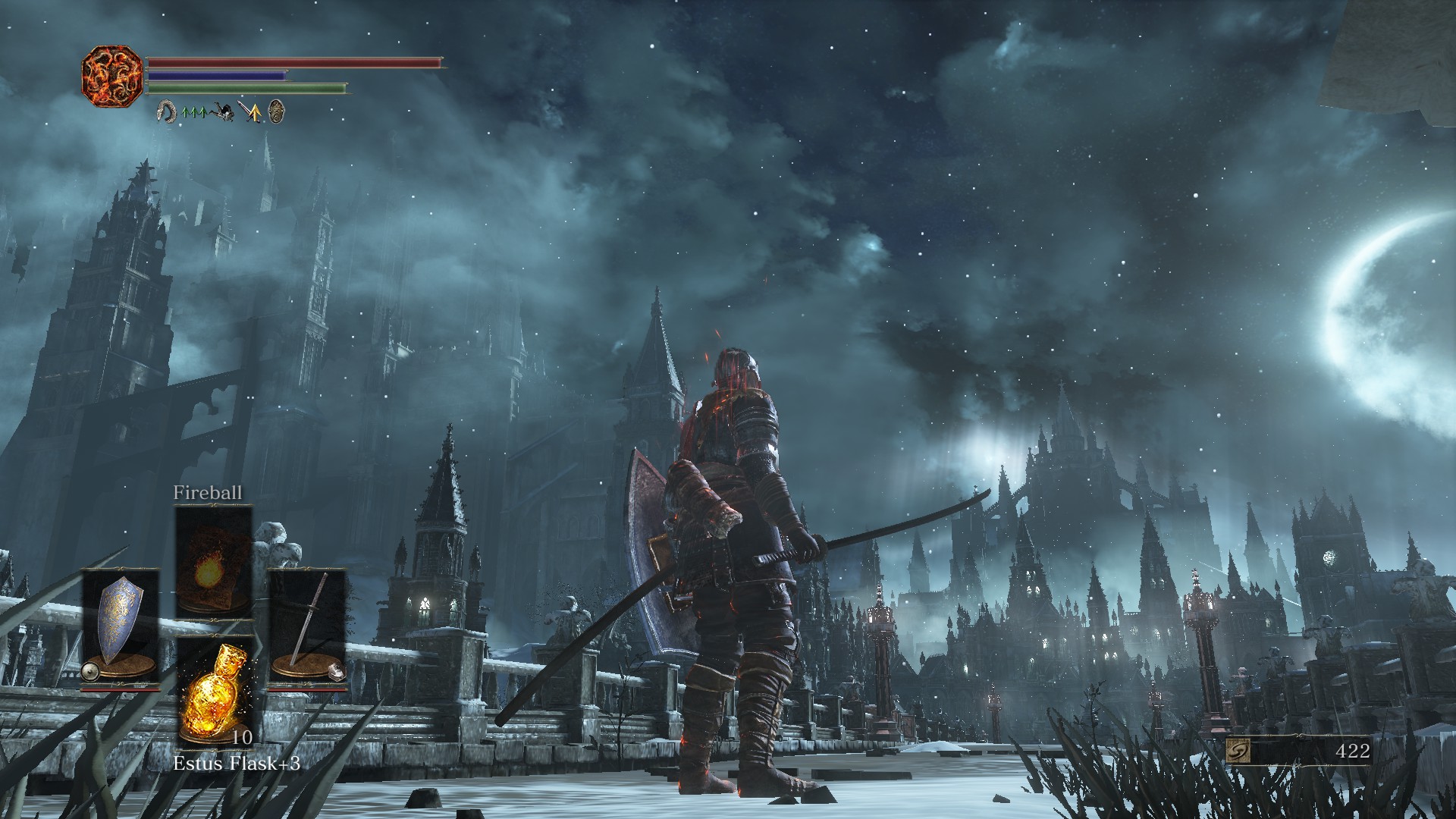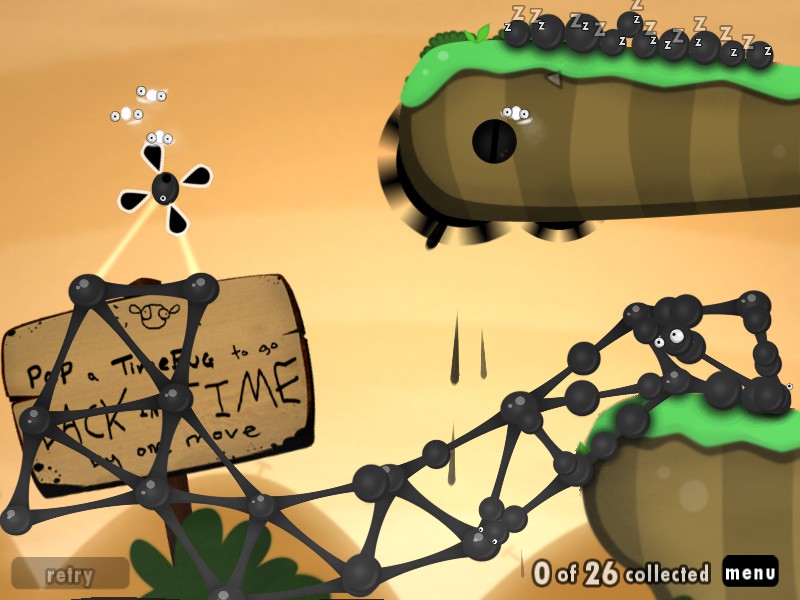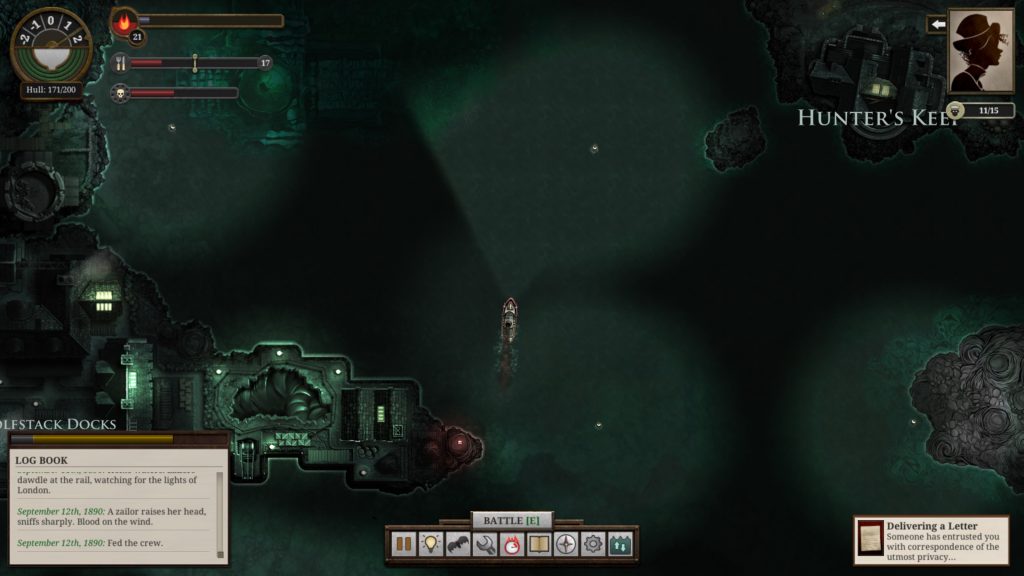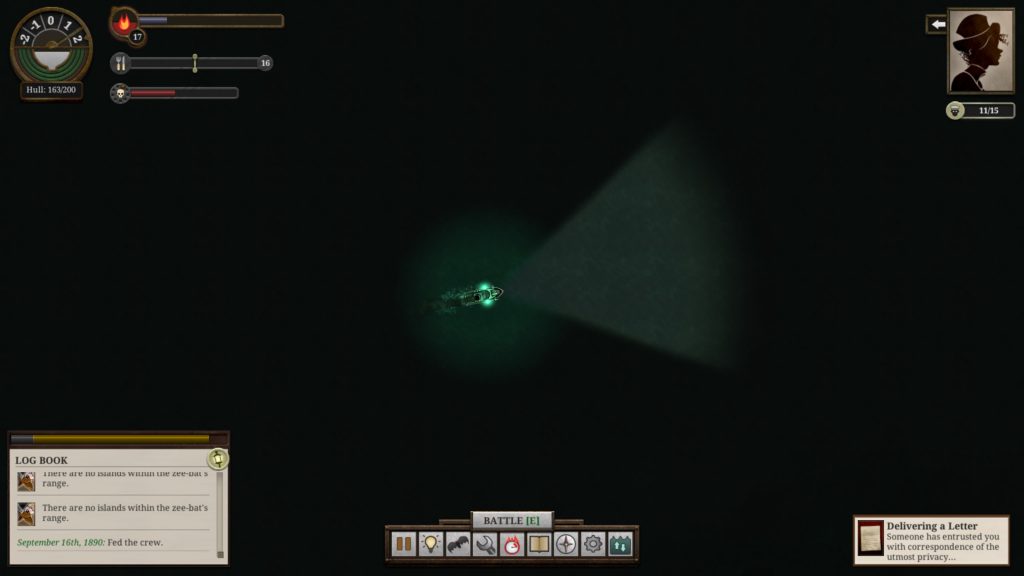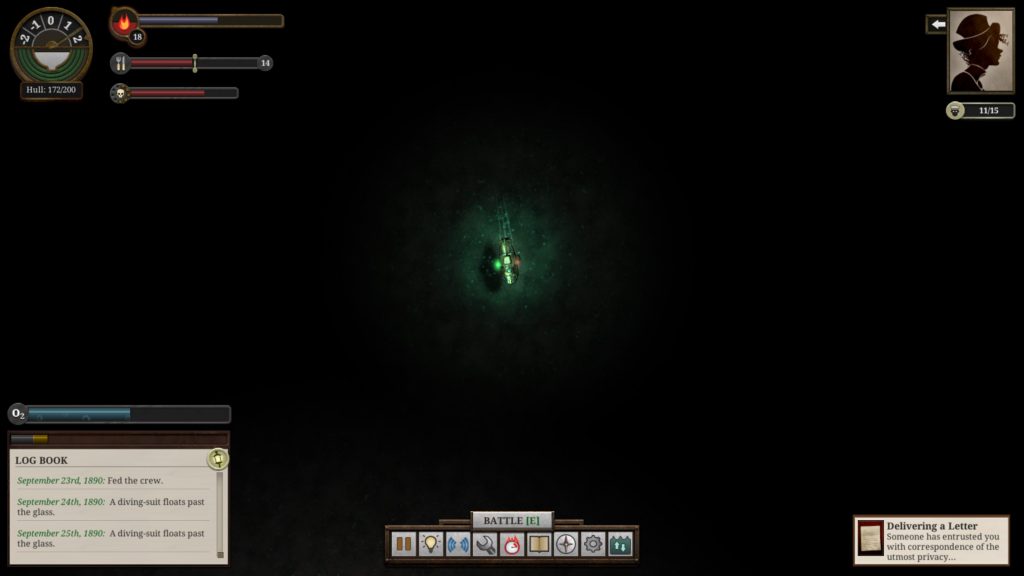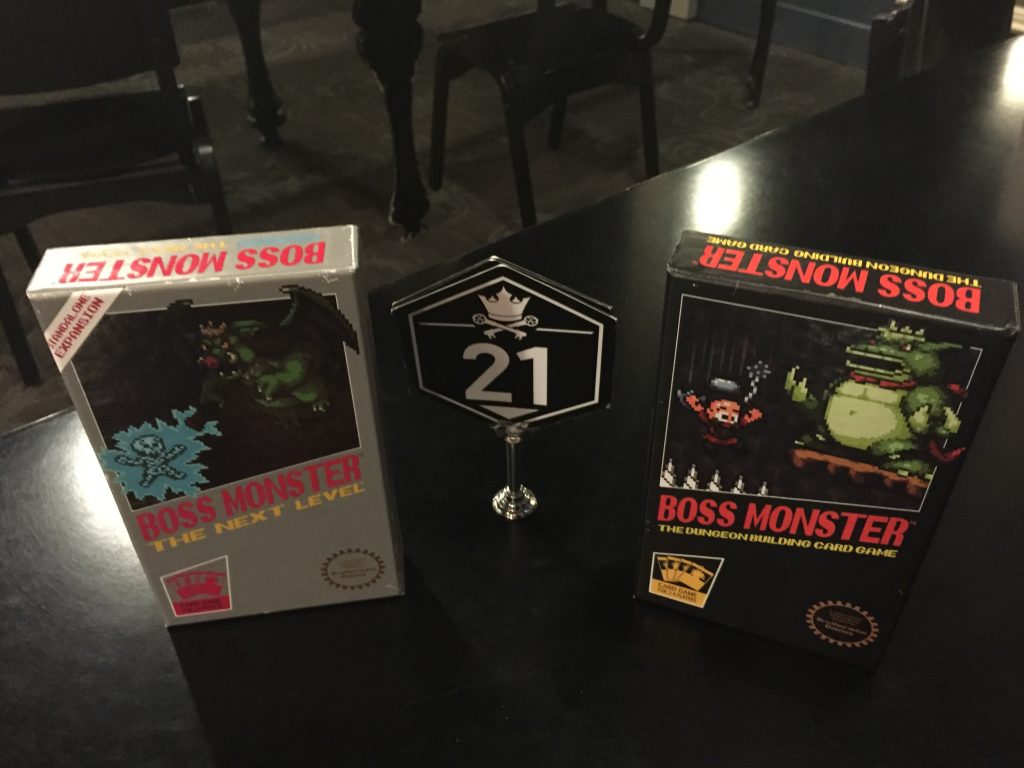Completed Review
You gain Brouzouf
You gain Brouzouf
You gain Brouzouf
My legs are ok
It all makes sense now… thanks to…

So I didn’t grow up getting to play Daikatana, Perfect Dark, System Shock, Deus Ex, or any of the other popular sci-fi futuristic FPS’s when I was a kid. I don’t think I was ever necessarily against them, but I think the age of the intended audience when these games were being released was generally above mine and my parents weren’t keen on giving me access to “mature” games. Luckily, in the recent years I’ve gotten to play a couple of these kinds of titles and some of them have been fantastic–E.Y.E. in particular (although this didn’t come out until 2011). All the while I was fascinated with E.Y.E., I kept reading references that it was largely inspired by Deus Ex; there’s even a monster in E.Y.E. called the Deus Ex Machina (which I know is also a saying but shutup). I don’t know why I was surprised when I turned on Deus Ex: Game of the Year Edition, but Deus Ex’s mechanics are very similar to E.Y.E.’s and in some cases I love Deus Ex’s even more-so.
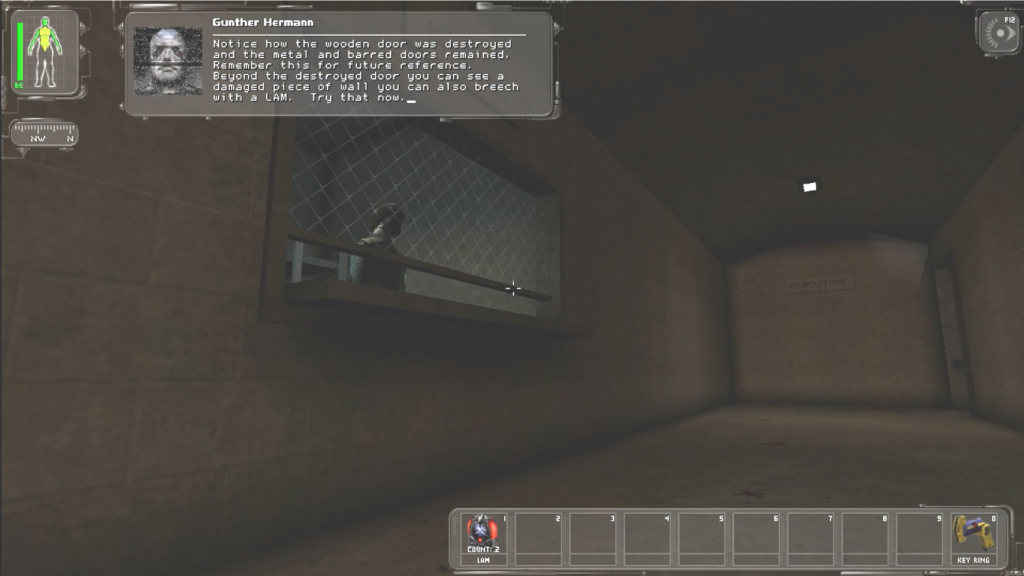
Deus Ex is a sci-fi futuristic FPS with some basic RPG elements, a real-time body-part injury system, an equipment inventory feature (with plenty of items to pick up) and a choose-your-own-adventure playstyle where you get to solve the missions the way you want to. Similar to E.Y.E. (or vice versa), in the world of Deus Ex people are just as much machine as they are human. Cyber implants are installed to boost performance in specialized fields, personal batteries need recharged to power augmentations and vast bodily injury is not only sustainable but quickly repaired given the presence of the appropriate medical robots. See that picture up there? It doesn’t look too impressive (or hilarious) until you realize that that I have no legs. During the training exercises in the beginning of the game, I accidentally blew my own legs off upon which I was relegated to using my arms to crawl around on the ground at the speed of a snail while leaving a blood trail. See that guy in the window? He’s one of the training instructors. He just watched me the whole time. I’m convinced he’s jackass.
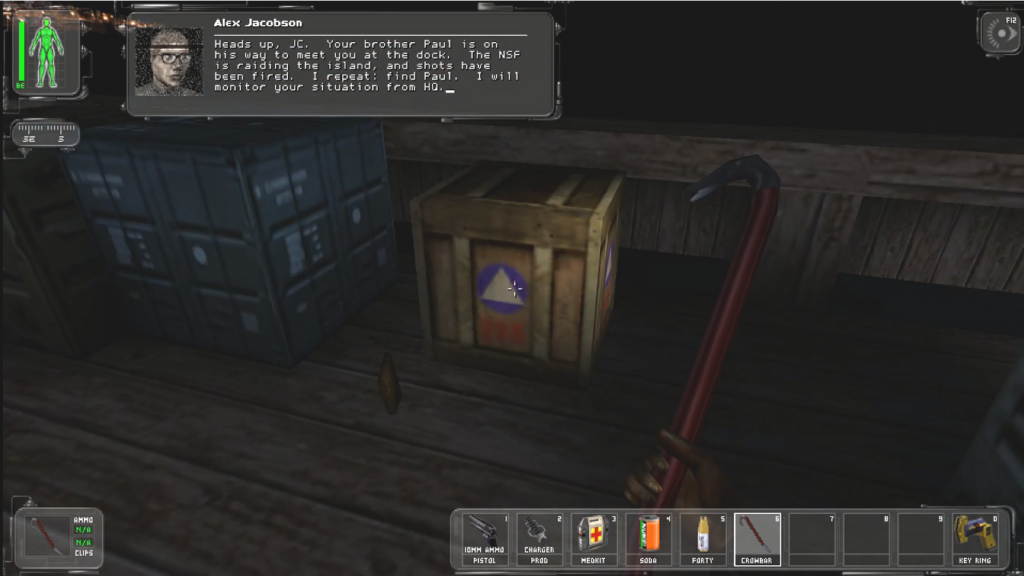
It didn’t take me long to figure out what kind of game I was playing or what I could expect after a couple rounds on the first mission. Upon the mission’s start, I grabbed some booze and an open can of soda lying on the docks, proceeded to talk to my brother and drink the open can of soda, tried to taze a robot with a stun rod, got filled with a copious amount of machine-fired bullets and bled to death on the docks. Thinking I should take a wiser approach, I decided to avoid the robot and search around for anything to aid my in my quest. I found a crowbar, and as any reasonable person would, began bashing in nearby crates to see if they had any goods. Running into a UNATCO Troop who was aimlessly walking around, he greeted me with “Welcome aboard, Agent.” Immediately, I identified such complacent courtesy with the actions of a double-agent, so I began to bash his face in with said crowbar. Luckily I was able to part his soul from his mortal container before I was gunned down on the spot by my very own brother–a clear sign that he was in cahoots with the conspiracy as well. My third attempt, my spirit left battered and bruised from my previous two, lead me to taking a desperate route where I beat any terrorist I found to death with nothing but a police baton. This revealed itself to be a surprisingly effective strategy until one of the terrorists decided to throw a poison grenade at me, resulting in my slow an painful death. Clearly this is the baton’s one and only flaw.
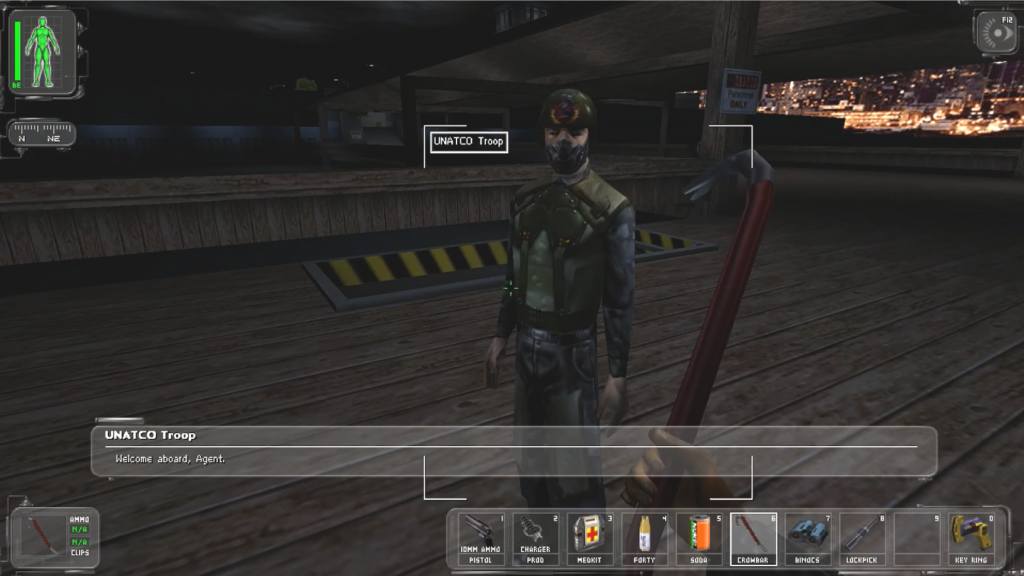
I went back and forth on whether this deserved Tier 1 or Tier 2 priority. Arguments for Tier 1 include getting to choose your playstyle, a somewhat interesting setting and mood, not babying your actions, having clear consequences for your actions, rewarding exploration and plenty of tools and gadgets for you to play with. Tier 2 arguments comprise of simplistic combat, a somewhat generic story (so far), a lack of in-game motivation to succeed (I’m not sure exactly why Denton is doing what he’s doing) and the talky bits can be a bit… well talky. In the end, I parked at Tier 1–there’s just something raw about the game that provided the final tipping point. It’s the way that you’re left to discover the game on your own and figure things out–success is granted with reward and failure granted with punishment. Whichever side of the line you fall on relies on you. Now, that being said… just what am I going to do with this open can of soda?
Steam Link
